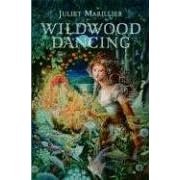
I have just returned from taking Deborah Ellis to her hotel after her last presentation during the Victoria leg of her western tour. I have spent the last several days listening to Deb address the effects of war, aids, poverty, and the drug trade on the lives of children with audiences that ranged from grade four students to senior citizens. The importance of the themes that Deb’s stories bring to the forefront are especially evident in the questions the young people in her audience ask; questions like how can kids live in prisons, why can’t kids who are sick get the medicine they need, and why can’t girls go to school in Afghanistan? Many will have read The Breadwinner, Pavanah's Journey and Mud City, but Deborah Ellis has written many other books. She is no one trick pony, despite this label she so often gives to herself. She is about shaking us out of our complacency and about empowering young people to demand more of our world and it's inhabitants. She is about social justice.
Not surprisingly, I was excited to hear that Deb has turned her compassionate yet critical storyteller’s eye on North American. Jakeman will be the title of her next novel. It's about kid whose mother goes to prison. It's about poverty and the feeling of being powerless, but it's also about alter-egos and about kids taking back their power. I can hardly wait to read it.








